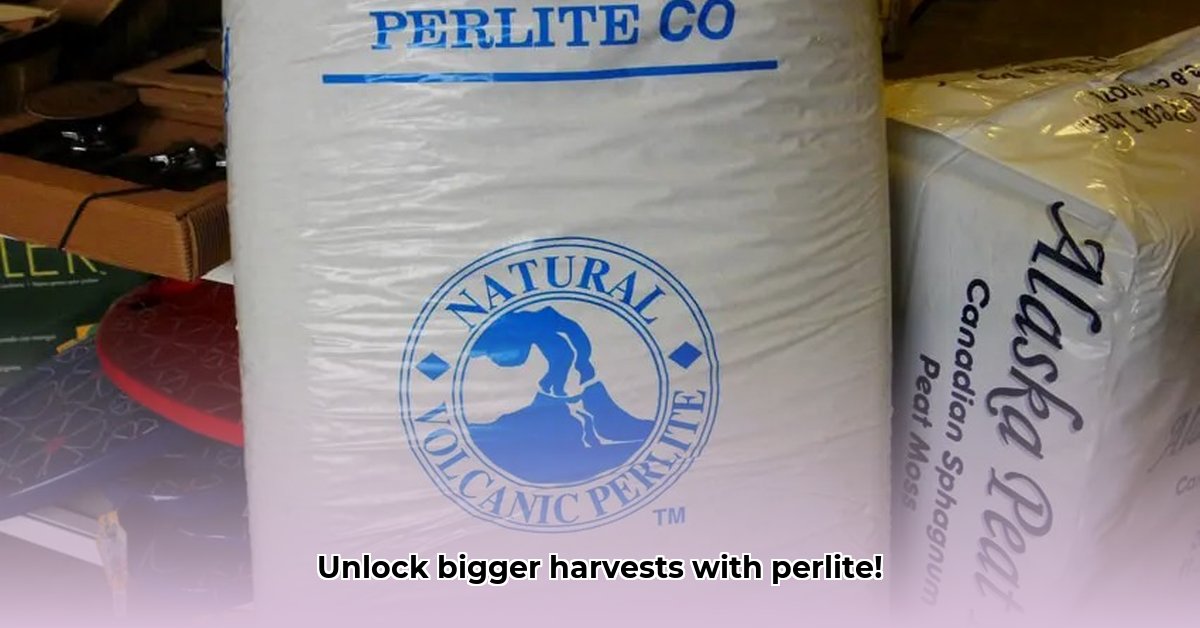
Understanding Tractor Supply Perlite: A Deep Dive
Tractor Supply perlite, a naturally occurring volcanic glass, is a game-changer for sustainable agriculture. Processed by heating to expand its structure, it transforms into a lightweight, porous, granular material resembling tiny, white pebbles. This unique structure is the key to its effectiveness as a soil amendment. Why is it so valuable? Because its porous nature drastically improves soil aeration, drainage, and water retention—all critical for healthy plant growth. For more information on aeration benefits, check out this helpful resource.
Improved aeration allows for better oxygen flow to plant roots, promoting stronger root systems and healthier overall plant development. This increased oxygen supply also helps prevent common root diseases that thrive in waterlogged soil. Simultaneously, perlite's excellent drainage prevents excess water buildup, reducing the risk of root rot, a significant threat to many plant species. However, the porous structure also helps retain moisture, preventing your soil from drying out too quickly, a critical factor in regions with lower rainfall or during periods of drought. This balance of drainage and water retention creates an ideal environment for optimal plant growth.
Perlite's environmental footprint is relatively low. It's a naturally occurring material, and its processing involves only heating, avoiding the use of harsh chemicals. However, minimizing transportation impacts is crucial. Sourcing perlite locally significantly reduces the carbon footprint associated with its transport. Finally, responsible disposal is essential; in many areas, used perlite can be safely added to compost piles, reducing landfill waste.
Choosing the Right Perlite for Your Needs
Tractor Supply typically offers perlite in various grades, distinguished by particle size. This seemingly minor detail significantly impacts its effectiveness. Larger particles, often labeled as coarse or horticultural perlite, provide superior drainage, ideal for amending heavy clay soils prone to waterlogging. These larger particles create larger air pockets, improving aeration and allowing for quicker water drainage.
Conversely, finer grades of perlite offer enhanced water retention, making them perfect for seed starting mixes and applications where better moisture retention is crucial. These smaller particles create more surface area, allowing for more water retention within the soil. They provide a fine, airy medium for delicate seedlings, minimizing the risk of damping-off, a common fungal disease affecting young plants. The choice between coarse and fine perlite depends entirely on your soil type, the specific crops being cultivated, and your desired level of water retention and drainage.
Consider your specific needs before purchasing. Do you have heavy clay soil requiring improved drainage, or sandy soil that needs better water retention? Are you starting seeds, growing in containers, or working with a hydroponic system? Understanding your soil type and crop requirements will guide you toward the optimal perlite grade to maximize results.
Applying Perlite: Practical Techniques for Success
Successfully incorporating perlite into your farming or gardening practices involves understanding the appropriate application techniques. For most garden applications, a good starting ratio is often a 1:4 mix of perlite to soil (one part perlite to four parts soil), although this can be adjusted based on your soil's specific characteristics and the needs of your plants.
Step 1: Prepare Your Soil: Thoroughly prepare the soil by removing any weeds, rocks, and debris. If amending existing soil, till or loosen the soil to a depth suitable for the plants being cultivated.
Step 2: Mix Thoroughly: Gently mix the perlite into your soil until it is uniformly distributed. Avoid overmixing, which can damage the perlite’s structure. For smaller batches, this can be done by hand; for larger areas, a garden tiller can be highly efficient.
Step 3: Seed Starting: When creating a seed-starting mix, perlite's role is even more critical. Combine it with other components, such as peat moss or coco coir, to create a well-draining, airy medium that promotes even germination and reduces the risk of damping-off.
Step 4: Hydroponics and Container Gardening: In hydroponic systems and container plantings, perlite serves as an excellent growing medium, providing aeration and drainage while retaining sufficient moisture. The improved drainage prevents waterlogging, a common problem in these settings, and is critical for the health of the plants' root systems.
Troubleshooting Common Perlite Challenges
While perlite offers many benefits, several challenges may arise. Overwatering is a common issue due to the improved drainage perlite provides. You might compensate by watering less frequently, but more deeply, ensuring the soil is evenly moistened. Monitor your soil moisture levels carefully, and only water when the top inch or two of your soil feels dry. If unsure, using a soil moisture meter can be highly beneficial.
Nutrient deficiencies can also occur, particularly when using perlite in a soilless mix. Since perlite itself doesn't provide nutrients, ensure you’re using a balanced fertilizer formulated for use with perlite or in soilless mixes. Regular soil testing is recommended to address any deficiencies promptly.
Sustainability in Perlite Usage: Responsible Practices
Choosing sustainable practices is crucial. Buy locally sourced perlite whenever possible. This minimizes your carbon footprint related to transportation. Explore alternative soil amendments – vermiculite, for example, offers similar benefits. Before switching, research alternative materials' impacts on your soil chemistry and environmental effects. When finished using perlite, don’t discard it in a landfill. Where appropriate, add it to your compost pile or check with local waste management facilities for recycling or reuse options. By following these responsible practices, you can harness perlite's advantages while minimizing environmental impact.
Tractor Supply Perlite
Content about tractor supply perlite (Auto-generated fallback due to API error).
Tractor Supply Perlite
Content about tractor supply perlite (Auto-generated fallback due to API error).